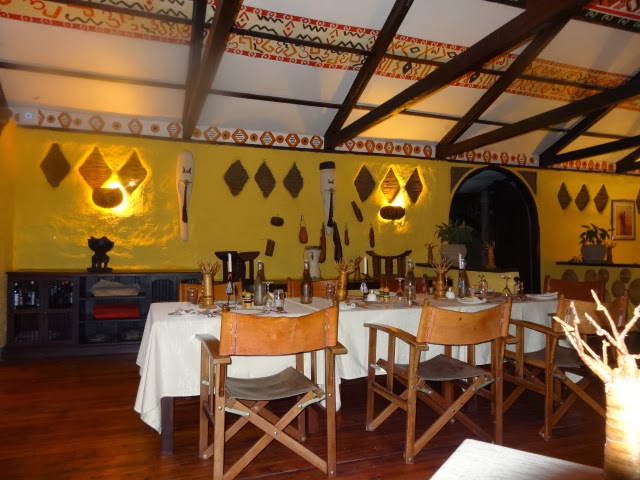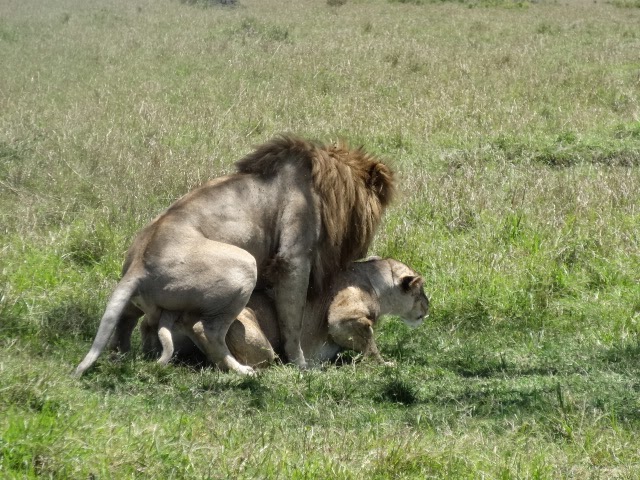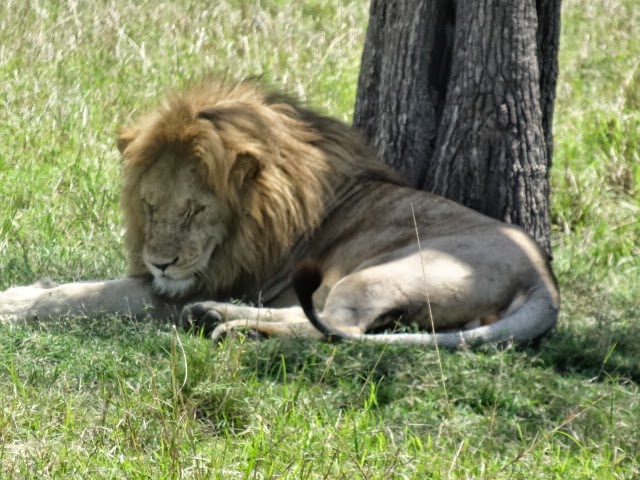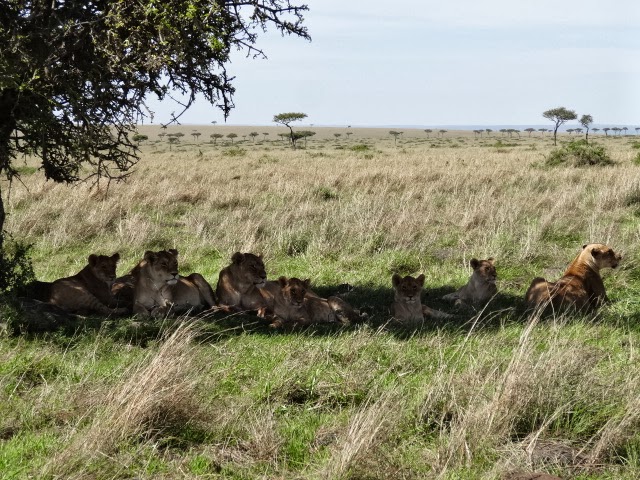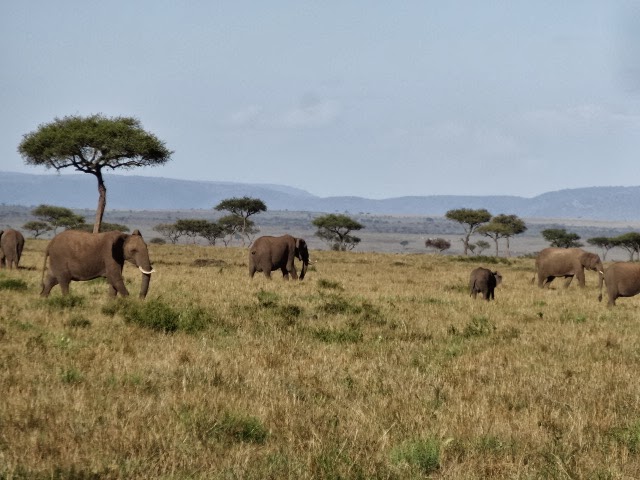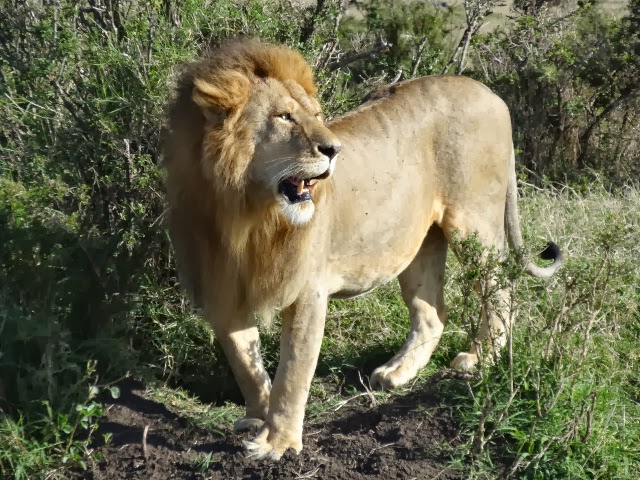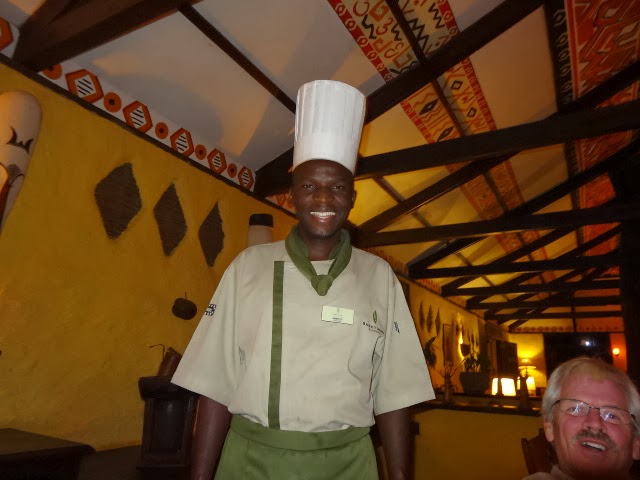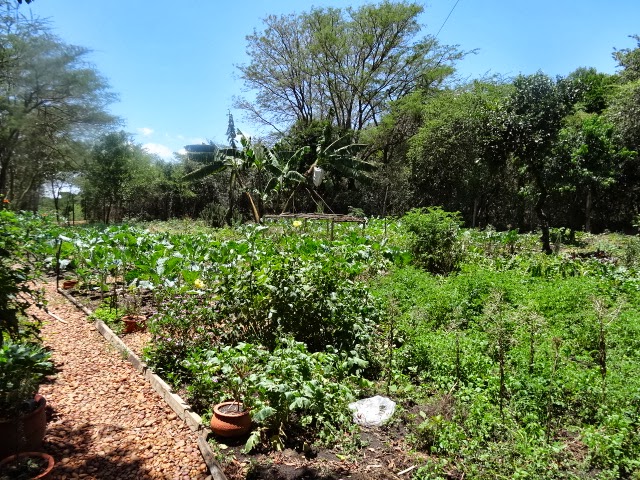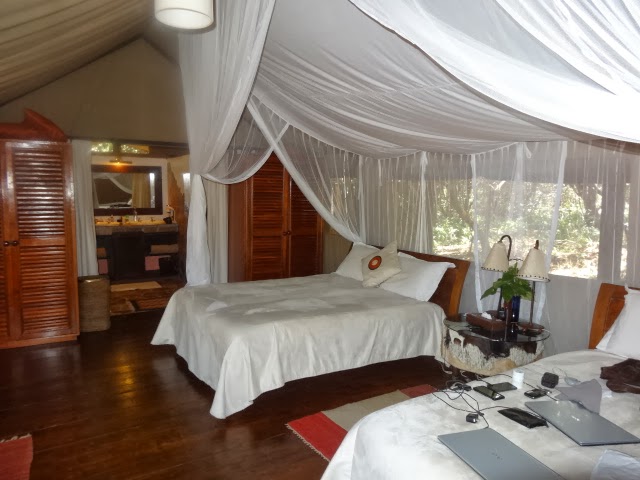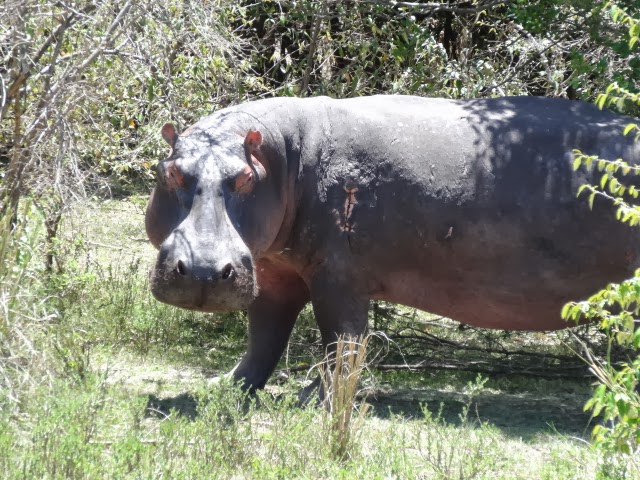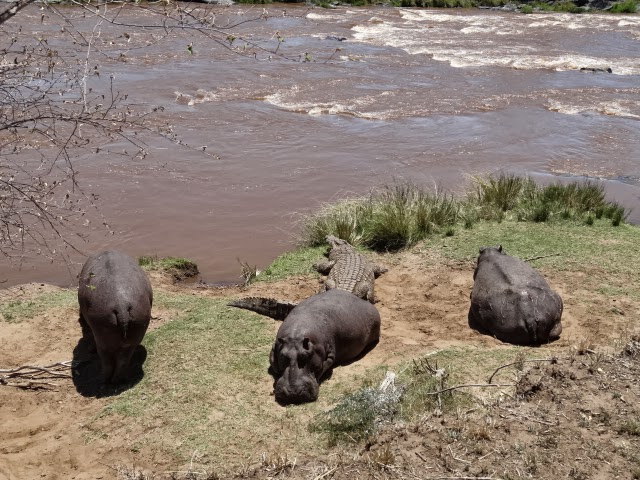 |
| It was hard to say goodbye to the staff at Camp Olonana Sanctuary Retreat after the extraordinary stay and safari.
|
When the cost to dine in a restaurant, stay in a hotel, resort, or, in this case, a safari camp exceeds one’s preferences and budget, there’s an expectation of perfection that is rarely achieved in the finest of establishments.
After all, the unexpected is to be expected, whether it’s dust on a window sill, a lack of fresh towels, or an inexperienced server fumbling a food order, perfection is unrealistic.

 |
| The gift shop had a wide array of souvenirs and gifts, none of which we purchased with no room in our bags as we continue on our world travels. |
 |
| More gifts and souvenirs in the gift shop.
|
 |
| Outside the gift shop was a Maasai shopping area, displaying the many well made and colorful items typical of the Maasai. |
 |
| On the second night at camp as we were finishing up yet another safari, Anderson took what appeared to be a new route back over unpaved bush areas. Bouncing about, we all giggled over the new route wondering why we were taking this route. With the gates to the reserve locking at 6:30 pm, we were late getting out. We’d assumed this new route was a way around going through the gates. Instead, suddenly we saw this campfire, to be surprised by everyone at camp, all guests and most staff were awaiting our arrival that tonight was the ritual “dinner in the bush” a total surprise for the 6 of us. |

 |
| Look at my plate at the “bush dinner!” It was exciting to know that most of the meat and vegetables were within my dietary constraints, all prepared to perfection, seasoned with local spices. Once again, great job Chef Ambrose! |
 |
| After the bush dinner, we posed for a photo, although after a day on safari, I hardly felt photo-ready. Tom’s face was sunburned from the almost 8 hours we spent on safari that day, exposed to the elements, loving every minute. We couldn’t wait to put our clothing in the dirty laundry hamper to be washed, dried, and folded to perfection that was returned to our tent the same evening. This service was included in the all-inclusive pricing. |
 |
| My salad at dinner on the second night was drizzled with an olive oil balsamic dressing Chef Ambrose made for me. It was divine. |
 |
| Tom’s appetizer was a creamy mushroom sauce atop a slice of buttery toasted homemade French bread, topped with an over-medium free-range egg. He moaned while eating it. Yeah, I know, an occasional piece of bread crosses his lips when dining out, never at “home.” The next morning at breakfast on our last day, Chef Ambrose explained when making our omelets, that I could top my omelet with this creamy mushroom sauce which was made with real cream, not flour. Then, I knew why Tom was moaning over this appetizer! |
 |
| On the first night, we both had the same entrée, a grilled sirloin steak atop a medley of sautéed vegetables. Tender, cooked exactly as requested, this steak required only a butter knife to cut it. Neither of us had appetizers or dessert that evening after having had lunch earlier in the day upon arrival. |
 |
| This was Tom’s dinner on the last night, pork chops piled high atop a pile of sautéed vegetables, fresh green beans, and baby corn. |
 |
| My dinner was a cheese stuffed chicken breast, atop a bed of sautéed vegetables with fresh green beans with a chicken-based flour-less reduction sauce to die for. I removed the baby corn to a separate unused plate. I had forgotten to tell Chef Ambrose that I can’t eat corn, knowing it wouldn’t cause a problem for me having been on the plate to be removed. Had it been a gluten-based item, I would have required an entirely new plate of food. With gluten intolerance, the smallest spec on a plate can result in a serious reaction which Chef Ambrose was well aware. |
 |
| My nightly dessert of fine cheese and Kenya is grown cashews and macadamia nuts. The night of the “bush dinner” Chef Ambrose had remembered to bring these items for my dessert, as the only guest in camp unable to eat the traditional desserts. Wow! |
At night the sound of the hippos outside our tent as they languished in the Mara River was music to our ears. The cool nights at 5000 feet above sea level, left us warmly wrapped in the finest of down comforters encased in high count Egyptian cotton sheets.
The over-sized fluffy bath towels, the robes, and the organic toiletries for our use only added more luxury to our stay. The glass bottles of an ample supply of purified water was always at our fingertips. Joseph delivered fresh coffee to our tent early each morning to also serve as a subtle wake-up call for our 6:30 am safari time.
 |
| Tom’s homemade brownie dessert topped with a caramel sauce and dollop of real whipped cream. He said it was fabulous! |
To simply say that we recommend Camp Olonana Sanctuary Retreat, does a disservice to those seeking this life-changing adventure. For many, a safari is a once in a lifetime experience with memories that will last forever.
One must not take the risk of choosing anything less than an opportunity to fulfill that dream with the utmost of expectation, the utmost of amenities, the utmost of service, and to our surprise, the utmost of perfection.
 |
| One last photo as we drove away. Goodbye Camp Olonana Sanctuary Retreat. |




